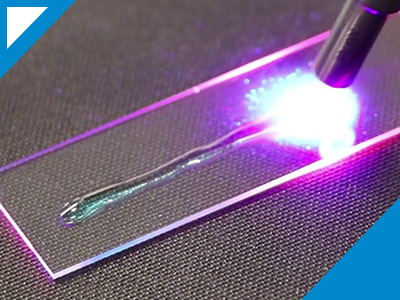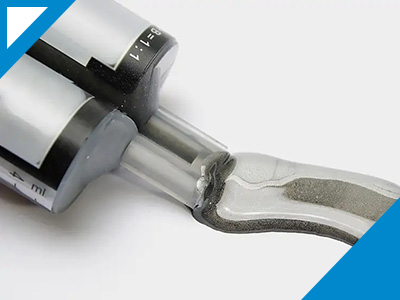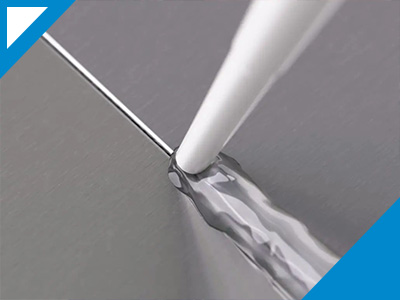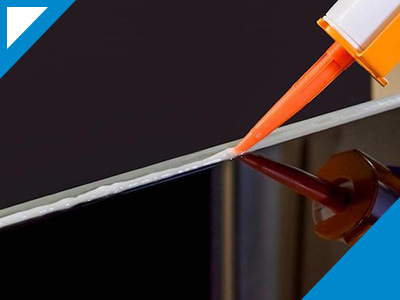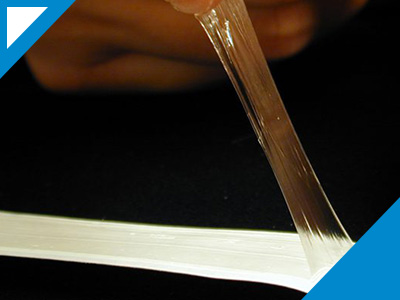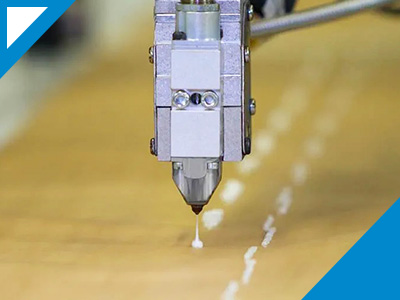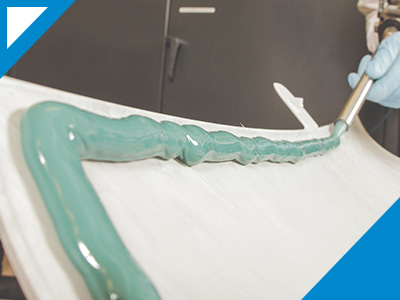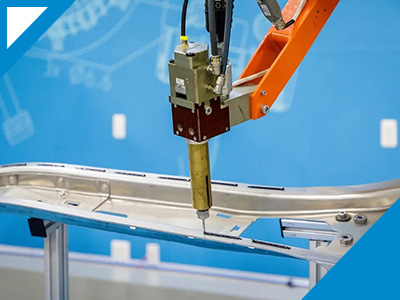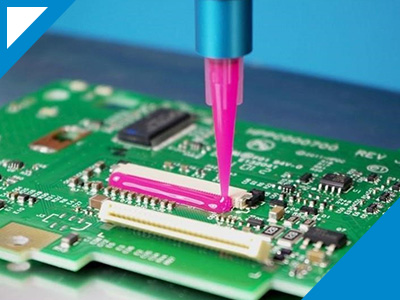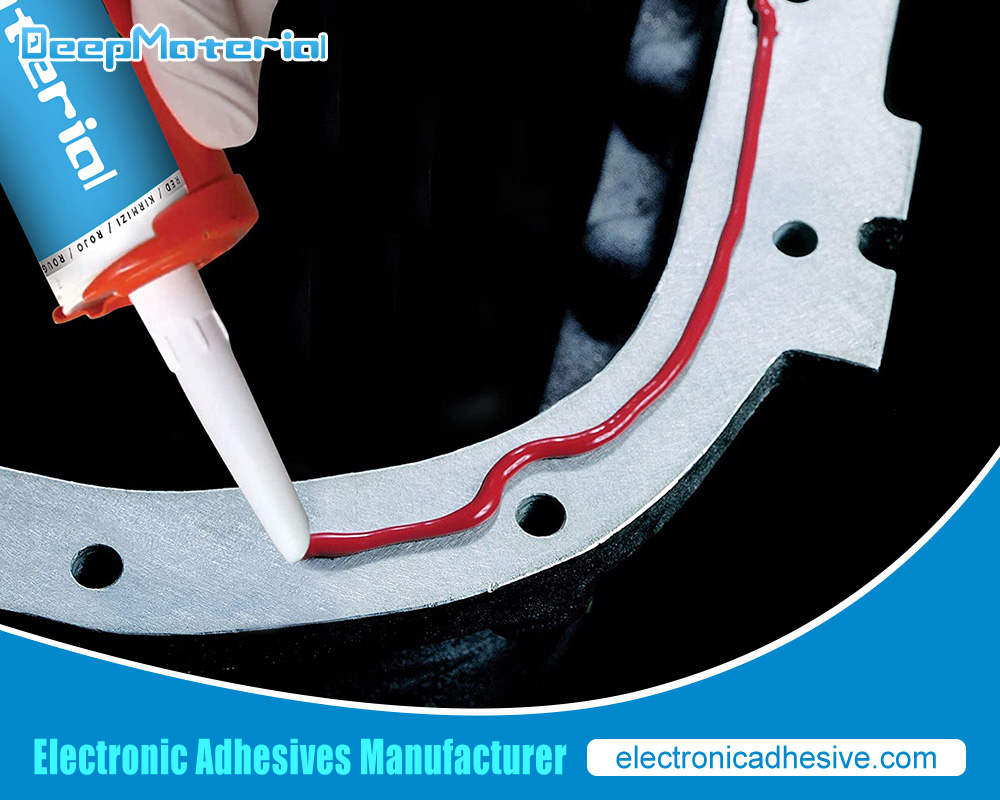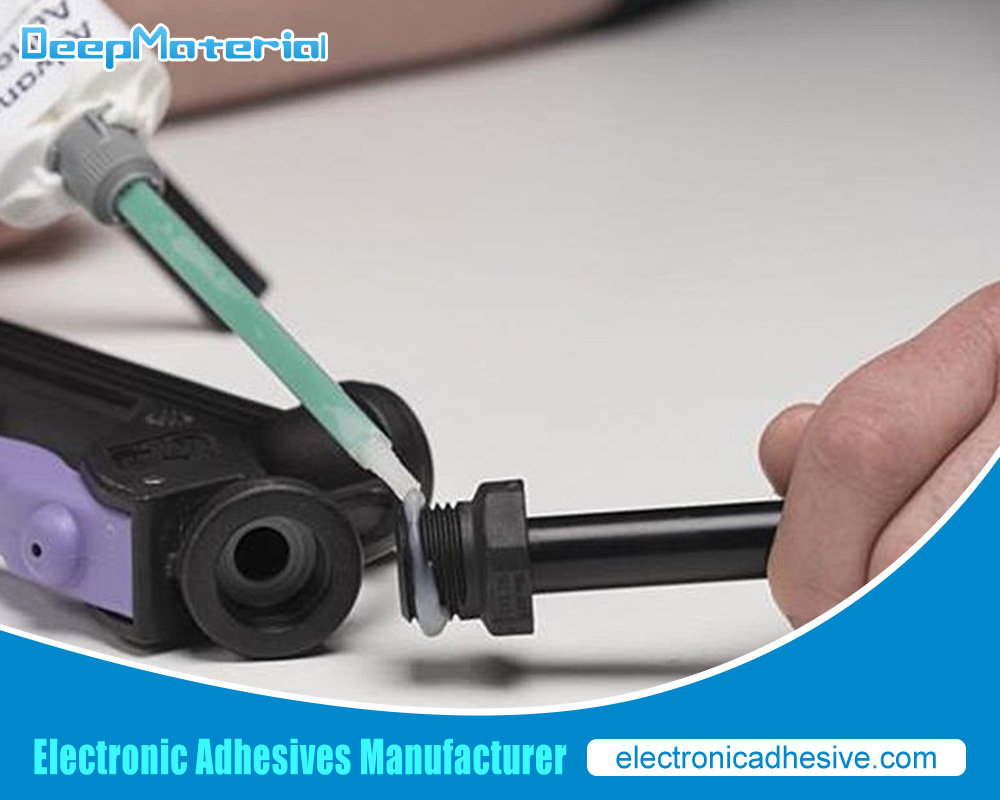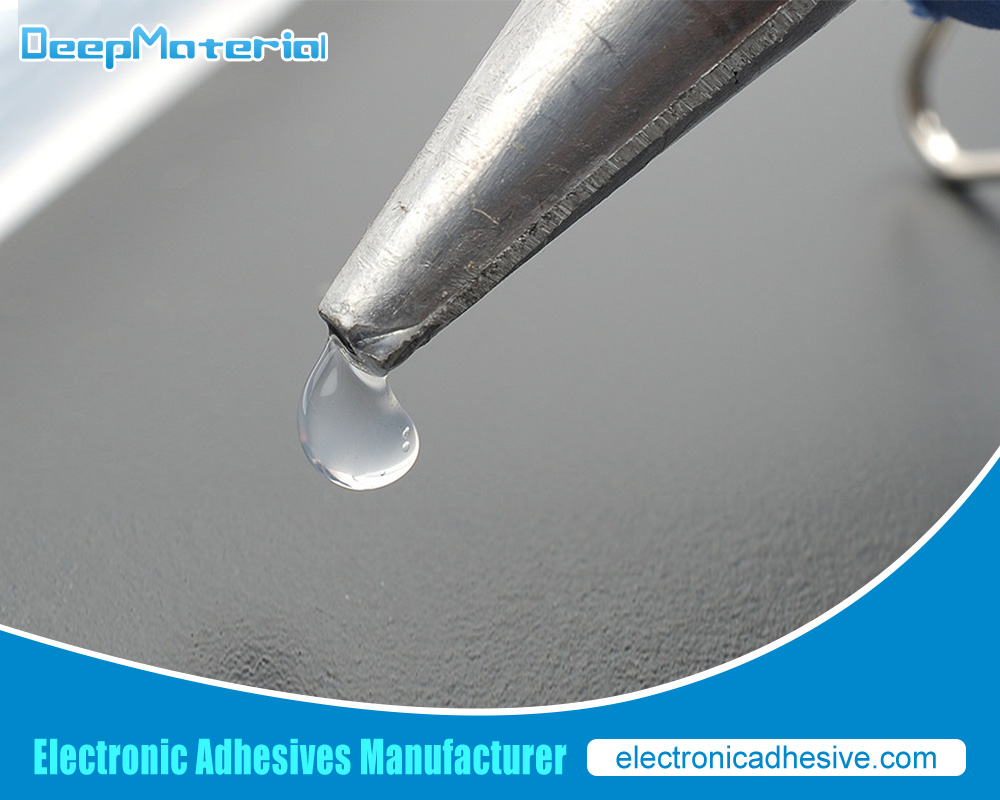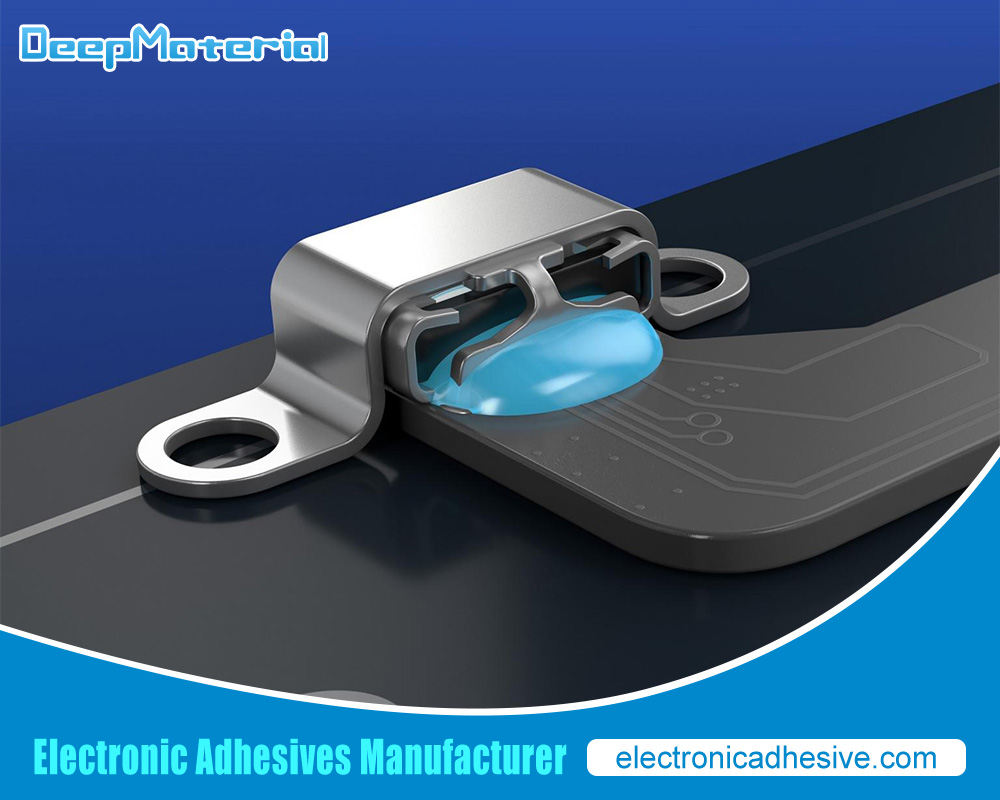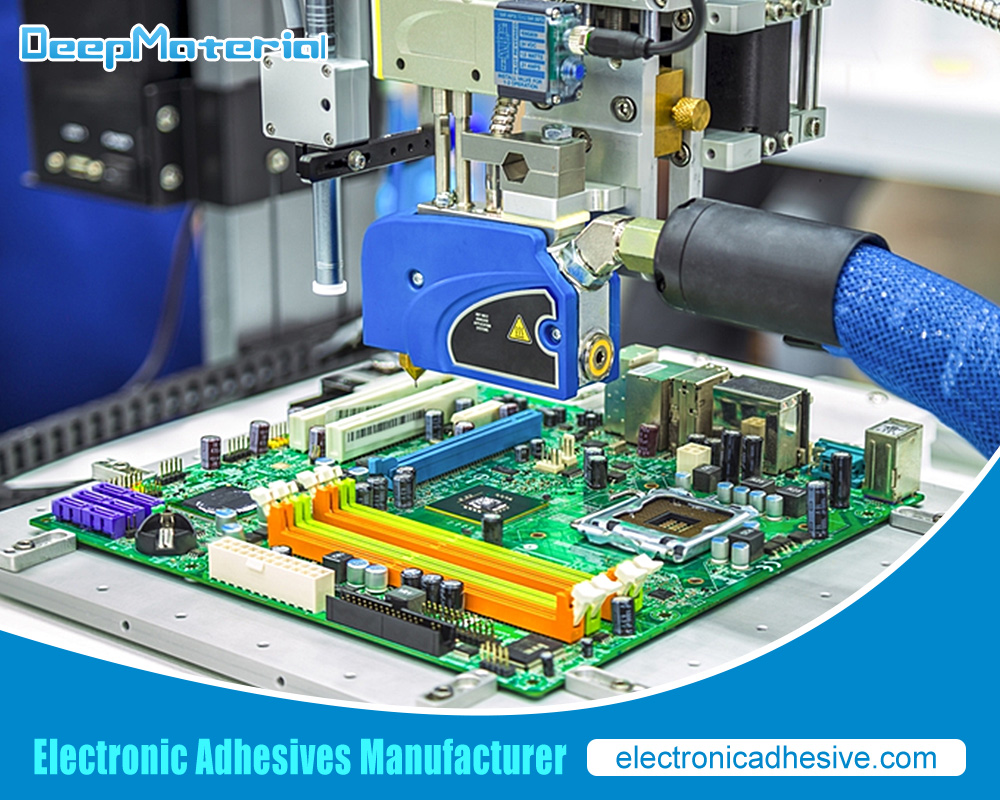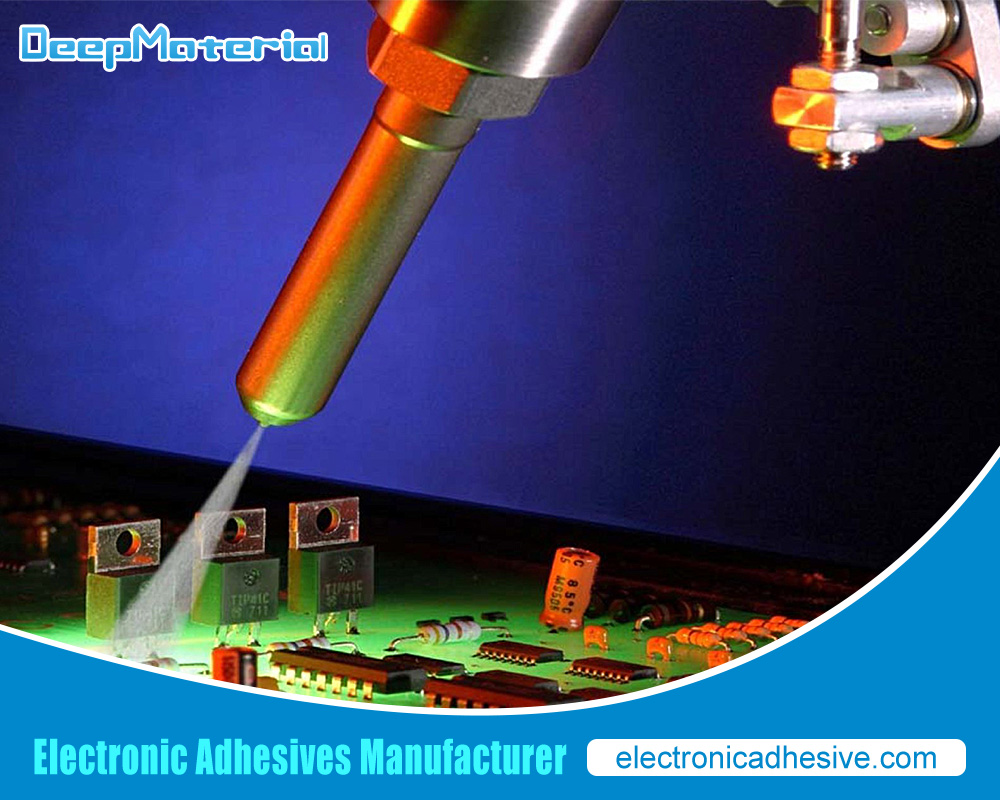Industrial Bonding Adhesive

Industrial bonding adhesives are essential for many manufacturing processes, including construction, automotive, electronics, and aerospace industries. They provide a robust and durable bond between two surfaces, reducing the need for mechanical fasteners such as screws, bolts, and rivets. Adhesives are also used to seal gaps and prevent leakage in various applications. This article will explore everything you need to know about industrial bonding adhesives, including their types, properties, applications, and safety considerations.
Definition of industrial bonding adhesives
Industrial bonding adhesives are specialized adhesives designed to create strong and durable bonds between different industrial materials, such as metals, plastics, and composites. These adhesives are used in various industries, including automotive, aerospace, construction, and electronics, where a robust and reliable bond is crucial for the performance and safety of the products.
Industrial bonding adhesives come in different forms, such as liquid, paste, film, or tape, and can be applied using various techniques, including spraying, brushing, rolling, or dispensing. They can also have different chemical compositions, such as epoxy, polyurethane, silicone, or cyanoacrylate, each with specific properties and applications.
Some benefits of industrial bonding adhesives include high strength and durability, resistance to chemicals, temperature, moisture, flexibility, and the ability to bond dissimilar materials. They can also reduce the need for mechanical fasteners, such as screws or rivets, which can weaken the fabric and add weight to the product.
Brief history of bonding adhesives
Humans have used bonding adhesives for thousands of years, and ancient Egyptians used glue from animal hides and bones to bind objects together. The ancient Greeks and Romans also used various adhesives, including egg whites, milk, and resin-based bonds.
In the 20th century, advances in chemistry and materials science led to development of a wide range of synthetic adhesives. In the 1920s and 1930s, synthetic resin adhesives, such as phenolic and urea formaldehyde, were developed and widely used in manufacturing.
During World War II, the demand for high-performance adhesives increased dramatically as new aircraft and military equipment required robust, durable bonding solutions. This led to the development of epoxy resins, which are still widely used in various applications, including aerospace, automotive, and construction.
In the 1950s and 1960s, advances in polymer science led to development of a range of new adhesives, including acrylics, cyanoacrylates (super glues), and polyurethanes. These adhesives have different properties and are suitable for use in various applications.
Today, bonding adhesives continue to play an essential role in manufacturing, construction, and other industries, and new advances in materials science are leading to the development of even more robust, more durable, and more versatile adhesive solutions.
Advantages of using bonding adhesives over mechanical fasteners
Bonding adhesives offer several advantages over mechanical fasteners, such as screws, bolts, and rivets. Here are some of the key benefits:
- Weight reduction: Bonding adhesives can distribute the load evenly over a larger surface area, reducing the need for heavy mechanical fasteners. This can significantly decrease weight, particularly in the aerospace and automotive industries.
- Improved aesthetics: Bonding adhesives can create a clean and seamless appearance since there are no visible fasteners, making them ideal for use in decorative or apparent applications.
- Reduced vibration and noise: Bonding adhesives can dampen vibration and reduce noise by creating a continuous bond between the two surfaces, resulting in a quieter and more comfortable environment.
- Improved durability: Bonding adhesives can provide a robust and permanent bond, reducing the risk of failure due to loosening or fatigue of mechanical fasteners. They can also resist environmental factors such as moisture, chemicals, and temperature changes.
- Increased productivity: Bonding adhesives can be applied quickly and easily, reducing assembly time and improving production efficiency. They can also eliminate the need for drilling, tapping, or welding, further speeding up the assembly process.
Types of bonding adhesives: epoxy
Epoxy adhesives can be further classified into different types based on their properties and applications. Some common types of epoxy bonding adhesives are:
- Structural Epoxy Adhesives: These are high-performance adhesives for bonding materials with high strength requirements, such as metals, plastics, and composites. They are typically two-part adhesives that offer excellent shear and peel strength and can withstand high temperatures and harsh environments.
- Clear Epoxy Adhesives: These are optically clear, two-part adhesives for bonding glass, crystal, and other transparent materials. They offer excellent adhesion and are ideal for applications where a clear bond line is desired.
- Flexible Epoxy Adhesives: These are two-part adhesives designed to remain flexible after curing. They are used for bonding materials that require some flexibility, such as plastics, rubber, and fabrics.
- Electrically Conductive Epoxy Adhesives: These are two-part adhesives containing conductive particles, such as silver or copper, allowing electrical current to pass through the bond line. They are used for bonding electrical components and circuits.
- Potting and Encapsulating Epoxy Adhesives are two-part adhesives used for potting and encapsulating electronic components and assemblies. They offer excellent protection against moisture, chemicals, and mechanical stress and can be used for low- and high-voltage applications.
Types of bonding adhesives: cyanoacrylate
Cyanoacrylate adhesives can be classified into different types based on their properties and applications. Some common types of cyanoacrylate bonding adhesives are:
- General-Purpose Cyanoacrylate Adhesives: These are fast-setting adhesives used for bonding a wide range of materials, including plastics, metals, and ceramics. They offer high strength and excellent adhesion and are ideal for applications requiring fast cure times.
- Rubber-Toughened Cyanoacrylate Adhesives: These are cyanoacrylate adhesives modified with rubber to improve their toughness and impact resistance. They are used for bonding materials such as automotive and aerospace components subjected to vibration or shock.
- Low-Odor and Non-Blooming Cyanoacrylate Adhesives: These are cyanoacrylate adhesives formulated to reduce their odor and prevent blooming, a white haze that can form around the bond line. They are used in applications where appearance is essential, such as jewelry and crafts.
- Surface-Insensitive Cyanoacrylate Adhesives: These are cyanoacrylate adhesives that can bond to various surfaces, including oily and dirty, without surface preparation. They are used for bonding materials that are difficult to connect with other adhesives.
- High-Temperature Cyanoacrylate Adhesives: These are cyanoacrylate adhesives that can withstand high temperatures, up to 250°C, without losing their strength or adhesion. They are used in applications requiring high-temperature resistance, such as automotive and aerospace components.
Types of bonding adhesives: polyurethane
Polyurethane adhesives can be classified into different types based on their properties and applications. Some common types of polyurethane bonding adhesives are:
- Structural Polyurethane Adhesives: These are high-performance adhesives for bonding materials with high strength requirements, such as metals, plastics, and composites. They are typically two-part adhesives that offer excellent shear and peel strength and can withstand high temperatures and harsh environments.
- Flexible Polyurethane Adhesives: These are two-part adhesives designed to remain flexible after curing. They are used for bonding materials that require some flexibility, such as plastics, rubber, and fabrics.
- Moisture-Cure Polyurethane Adhesives: These are one-part adhesives that cure when exposed to moisture in the air. They are used for materials that are difficult to bond with other adhesives, such as wood, concrete, and masonry.
- Low-Density Polyurethane Adhesives are two-part adhesives formulated with hollow microspheres to reduce their density and weight. They are used for bonding materials that require a lightweight bond, such as in the aerospace industry.
- UV-Curable Polyurethane Adhesives are two-part adhesives that cure when exposed to UV light. They are used for bonding materials that require fast cure times, such as in the electronics industry, and can be used for bonding both rigid and flexible materials.
Types of bonding adhesives: silicone
Silicone adhesives can be further classified into different types based on their properties and applications. Some common types of silicone bonding adhesives are:
- General-Purpose Silicone Adhesives: These are silicone adhesives used for bonding a wide range of materials, including plastics, metals, and ceramics. They offer good adhesion and flexibility and are ideal for applications requiring a flexible bond.
- High-Temperature Silicone Adhesives: These are silicone adhesives that can withstand high temperatures, up to 300°C, without losing their strength or adhesion. They are used in applications requiring high-temperature resistance, such as in the automotive and aerospace industries.
- Electrical Insulating Silicone Adhesives: These are silicone adhesives formulated with insulating properties and used for bonding and sealing electrical components and circuits. They offer excellent electrical insulation and resistance to moisture and chemicals.
- Structural Silicone Adhesives: These are high-performance silicone adhesives used for bonding materials with high strength requirements, such as glass, metal, and plastics. They offer excellent shear and peel strength and are ideal for structural bonding applications.
- UV-Curable Silicone Adhesives: These are silicone adhesives that cure when exposed to UV light. They are used for bonding materials that require fast cure times, such as in the electronics industry, and can be used for bonding both rigid and flexible materials.

Types of bonding adhesives: acrylic
Acrylic adhesives can be further classified into different types based on their properties and applications. Some common types of acrylic bonding adhesives are:
- Structural Acrylic Adhesives: These are high-performance adhesives for bonding materials with high strength requirements, such as metals, plastics, and composites. They offer excellent shear and peel strength and can withstand high temperatures and harsh environments.
- Flexible Acrylic Adhesives: These are two-part adhesives designed to remain flexible after curing. They are used for bonding materials that require some flexibility, such as plastics, rubber, and fabrics.
- UV-Curable Acrylic Adhesives: This two-part adhesives cure when exposed to UV light. They are used for bonding materials that require fast cure times, such as in the electronics industry, and can be used for bonding both rigid and flexible materials.
- Low-Odor Acrylic Adhesives: These are two-part adhesives formulated to reduce their odor during application and curing. They are used in applications concerning smell, such as automotive and aerospace industries.
- Hybrid Acrylic Adhesives: These are two-part adhesives that combine the properties of acrylic and other adhesive technologies, such as polyurethane or silicone. They balance strength, flexibility, and durability and can be used for various bonding applications.
Types of bonding adhesives: polyvinyl acetate (PVA)
PVA adhesives can be further classified into different types based on their properties and applications. Some common types of PVA bonding adhesives are:
- Woodworking PVA Adhesives: These are PVA adhesives specifically formulated for bonding wood. They offer a strong bond and have a longer open time, which allows for repositioning and clamping.
- Paper and Packaging PVA Adhesives: The packaging industry uses PVA adhesives for bonding paper and cardboard. They offer a fast-setting bond with high solids content, making them suitable for high-speed production lines.
- High Solids PVA Adhesives: These are PVA adhesives with a higher solids content than traditional PVA adhesives, making them more viscous and suitable for vertical and overhead applications. They offer a strong bond and are commonly used in the construction and woodworking industries.
- Low VOC PVA Adhesives: These are PVA adhesives formulated to have common volatile organic compounds (VOC) levels. They are used in applications where odor and emissions are a concern, such as schools, hospitals, and residential construction.
- Cross-Linking PVA adhesives are modified with cross-linking agents to improve water resistance and durability. They are commonly used in outdoor applications, such as woodworking and construction.
Properties of bonding adhesives: strength
Bonding adhesives can vary in strength depending on the type of adhesive and the materials being bonded. Here are some general properties of bonding adhesives regarding power:
- Tensile Strength refers to the maximum stress an adhesive can handle before breaking when pulled apart. The tensile strength of a bonding adhesive is typically measured in pounds per square inch (PSI).
- Shear Strength: This is the maximum stress an adhesive can handle before breaking when pulled across the surface; it is bonding. Shear strength is also typically measured in PSI.
- Peel Strength: This is the maximum stress that an adhesive can handle before breaking when pulled in a direction perpendicular to the surface it is bonding. Peel strength is also typically measured in PSI.
- Impact Strength: This refers to the ability of an adhesive to resist damage from impact or shock.
- Fatigue Resistance: This is the ability of an adhesive to resist failure over time due to repeated stress or strain.
Properties of bonding adhesives: durability
The durability of bonding adhesives refers to their ability to maintain a strong bond over time, despite various environmental factors, such as temperature changes, humidity, and chemical exposure. Here are some properties of bonding adhesives related to durability:
- Weather Resistance: This refers to the ability of an adhesive to resist damage or degradation caused by exposure to sunlight, rain, and extreme temperatures.
- Chemical Resistance: Some bonding adhesives formulated to withstand chemical exposure, such as acids, bases, solvents, and oils.
- Water Resistance: Some bonding adhesives are designed to resist water or moisture, which can weaken the bond and cause the adhesive to deteriorate.
- UV Resistance: This refers to the ability of an adhesive to resist damage from exposure to ultraviolet (UV) radiation from the sun or other sources.
- Thermal Resistance: This refers to the ability of an adhesive to withstand high or low temperatures without losing its bonding properties.
- Aging Resistance: This is the ability of an adhesive to maintain its properties over time without becoming brittle, yellowed, or losing its adhesion strength.
The durability of a bonding adhesive is critical, especially in applications where the bond needs to last for an extended period. Manufacturers typically specify the durability of their adhesives in terms of years of service life or exposure to specific environmental factors. Choosing the suitable adhesive based on the durability requirements of your application is essential to ensure a long-lasting bond.
Properties of bonding adhesives: flexibility
Flexibility is an essential property of bonding adhesives as it determines how much a bonded joint can deform before it breaks. A flexible adhesive allows the related materials to move and flex without cracking or smashing the bond.
Some common examples of flexible bonding adhesives include silicone adhesives, polyurethane adhesives, and epoxy adhesives. These adhesives are often used in applications where the bonded materials are subject to vibration, thermal expansion, contraction, or other types of movement.
In addition to flexibility, bonding adhesives can also be characterized by other properties such as strength, durability, cure time, and chemical resistance. The choice of adhesive will depend on the specific requirements of the application, including the materials being bonded, the environment in which the bond will be exposed, and the desired performance characteristics of the bond.
Properties of bonding adhesives: temperature resistance
Bonding adhesives can have a wide range of properties, and temperature resistance is one of the critical factors that can vary between different types of bonds.
Temperature resistance refers to the ability of an adhesive to maintain its bond strength and other properties when exposed to high or low temperatures. Some adhesives may be explicitly designed for high-temperature applications, while others may be more suitable for low-temperature environments.
For example, some types of bonding adhesives are designed to withstand high temperatures of up to 500°F (260°C) or more, making them suitable for use in automotive, aerospace, and other industrial applications involving high heat exposure. These adhesives may be based on silicone, epoxy, or polyurethane, known for their ability to withstand high temperatures.
Other adhesives may be designed for low-temperature applications, such as refrigeration or cryogenic environments. These adhesives may be formulated with materials that remain flexible at shallow temperatures, such as polyurethane or cyanoacrylate.
Generally, the temperature resistance of a bonding adhesive will depend on factors such as its chemical composition, the specific application for which it is intended, and the length of time it will be exposed to high or low temperatures. It is essential to choose an adhesive specifically designed for your application’s temperature range to ensure optimal bonding performance and durability.
Properties of bonding adhesives: chemical resistance
Chemical resistance is an important property to consider when selecting a bonding adhesive for a particular application. Chemical resistance refers to the ability of the adhesive to withstand exposure to various chemicals without degrading or losing its bond strength. The level of chemical resistance required will depend on the specific application and the types of chemicals the adhesive is likely to come into contact with.
Some bonding adhesives, such as epoxy and polyurethane, offer excellent chemical resistance and can withstand exposure to various chemicals, including acids, bases, solvents, and oils. Other types of adhesives, such as cyanoacrylate (super glue), may be more susceptible to chemical attack and may degrade or lose their bond strength when exposed to certain chemicals.
It is essential to consider the specific chemicals the adhesive will come into contact with, as different bonds may have different levels of resistance to other chemicals. In some cases, it may be necessary to select a specialty adhesive specifically formulated to withstand exposure to a particular chemical.
Overall, chemical resistance is an important property to consider when selecting a bonding adhesive, as it can impact the long-term durability and effectiveness of the bond.
Properties of bonding adhesives: cure time
Bonding adhesives come in various types and formulations, and their properties vary significantly. The cure time of a bonding adhesive refers to the time it takes for the bond to reach its full strength and hardness after application.
The cure time of a bonding adhesive depends on several factors, including the type of adhesive, the temperature and humidity of the environment, the thickness of the adhesive layer, and the materials being bonded.
Some bonding adhesives cure quickly, within a few minutes, while others may take several hours or even days to reach full strength. Fast-curing adhesives are typically used for applications requiring rapid assembly or production, while slower-curing bonds may be more appropriate for larger or more complex assemblies.
Following the manufacturer’s instructions for curing time and application procedures is essential to ensure that the adhesive forms a solid and durable bond. In some cases, additional curing time may be necessary to achieve maximum bond strength, which should be considered when planning a project or production schedule.
Applications of bonding adhesives in construction industry
Bonding adhesives are used in the construction industry for various applications. They are versatile and durable and offer several advantages over traditional mechanical fasteners such as screws, nails, and bolts. Here are some typical applications of bonding adhesives in the construction industry:
- Structural Bonding: Bonding adhesives are widely used to construct buildings, bridges, and other large structures. They can bond different materials, including metals, plastics, composites, and wood, providing high-strength bonds that are often stronger than mechanical fasteners.
- Flooring: Bonding adhesives are commonly used to install flooring systems such as tiles, carpets, and wood flooring. The adhesive ensures a strong bond between the flooring material and the subfloor, preventing movement and reducing noise.
- Facade Panels: Bonding adhesives are used in the installation of facade panels, which are used to enhance the appearance of buildings. The adhesive provides a strong bond between the board and the building’s surface, ensuring the forum remains in place even in harsh weather conditions.
- Insulation: Bonding adhesives attach insulation to walls, ceilings, and floors. This ensures the insulation remains in place, preventing heat loss and reducing energy costs.
- Roofing: Bonding adhesives bond roofing membranes, providing a durable and long-lasting waterproof seal. This reduces the risk of leaks and other roofing problems.
Overall, bonding adhesives offer a range of benefits in the construction industry, including improved durability, reduced weight, increased design flexibility, and enhanced aesthetics.
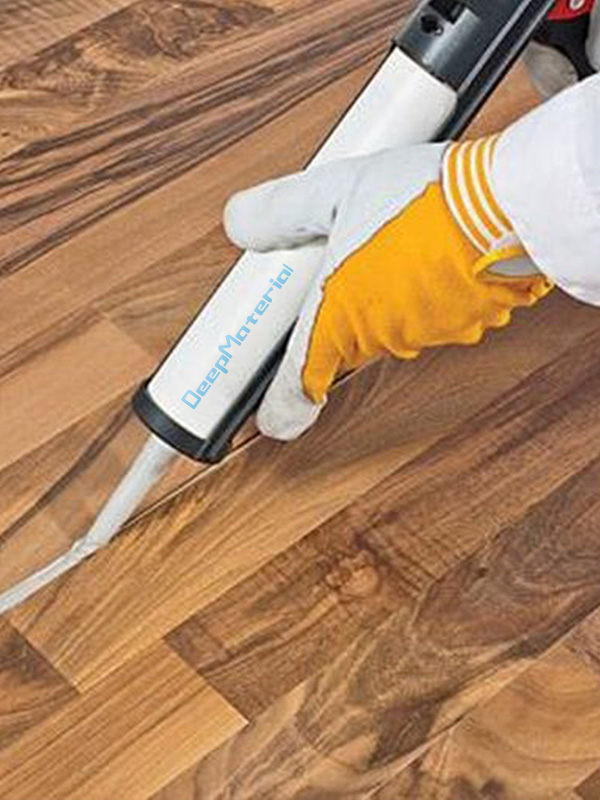
Applications of bonding adhesives in automotive industry
Bonding adhesives have become increasingly popular in the automotive industry due to their superior bonding strength and durability compared to traditional mechanical fasteners. Here are some applications of bonding adhesives in the automotive industry:
- Body-in-white assembly: Bonding adhesives join different parts of the car body together. This includes joining the roof, doors, hood, trunk lid, and other details to the car body.
- Structural bonding: Bonding adhesives can be used to bond structural components of the car, such as the frame, chassis, and suspension components. This provides better rigidity and reduces weight, leading to improved fuel efficiency.
- Sealing and bonding of glass: Bonding adhesives can seal and bond the windshield and other components to the car body. This provides better insulation against noise and improves the vehicle’s overall aerodynamics.
- Interior trim and upholstery: Bonding adhesives attach interior trim and upholstery to the car body. This includes attaching door panels, headliners, and carpeting.
- Noise and vibration reduction: Bonding adhesives can reduce car noise and vibration by bonding different body parts together. This leads to a quieter and more comfortable ride.
Overall, bonding adhesives provide numerous benefits in the automotive industry, including improved strength and durability, reduced weight, improved fuel efficiency, and a quieter and more comfortable ride.
Applications of bonding adhesives in electronics industry
Bonding adhesives are widely used in the electronics industry for various applications because they bond materials together without the need for mechanical fasteners or welding. Some of the applications of bonding adhesives in the electronics industry include:
- Surface mounting of electronic components: Bonding adhesives attach electronic components to printed circuit boards (PCBs) during the surface mounting. This allows for a stronger, more reliable bond than traditional soldering methods.
- Encapsulation of electronic components: Bonding adhesives are used to encapsulate electronic components such as sensors, microchips, and LEDs to protect them from moisture, dust, and other environmental factors.
- Bonding of display screens: Bonding adhesives are used to bond the glass display screens of electronic devices such as smartphones and tablets to the device housing. This provides a strong bond that is resistant to impacts and vibrations.
- Bonding of electronic housing components: Bonding adhesives are used to bond the various housing components of electronic devices together, such as the back cover, bezel, and frame. This provides a robust and durable bond resistant to impacts and vibrations.
- Bonding of heat sinks: Bonding adhesives attach heat sinks to electronic components that generate a lot of heat, such as power transistors and processors. This helps to dissipate the heat more effectively and prevent damage to the electronic components.
Applications of bonding adhesives in aerospace industry
Bonding adhesives are widely used in the aerospace industry due to their ability to provide robust, lightweight, and durable bonds between various materials. Here are some of the typical applications of bonding adhesives in the aerospace industry:
- Aircraft assembly: Bonding adhesives are used to assemble various components of an aircraft, such as wings, fuselage, and empennage. These adhesives can join different materials, such as aluminum, titanium, composites, and plastics, creating a solid and durable bond that can withstand the stresses of flight.
- Surface protection: Bonding adhesives can protect an aircraft’s surface from environmental factors such as corrosion, erosion, and abrasion. They can also be used to provide a smooth surface for better aerodynamics.
- Composite bonding: Bonding adhesives are essential in producing composite materials used in aerospace applications. They bond the various layers of composite materials, such as carbon fiber, together to create strong and lightweight structures.
- Repairs and maintenance: Bonding adhesives are used extensively in the repair and maintenance of aircraft. They can repair cracks, holes, and other damage to aircraft structures and attach new components.
- Heat shielding: Bonding adhesives attach heat shields to various aircraft parts, such as engines and exhaust systems. These adhesives are designed to withstand high temperatures and provide a secure attachment for the heat shield.
Applications of bonding adhesives in medical industry
Bonding adhesives have a wide range of applications in the medical industry due to their ability to provide robust, biocompatible, and non-invasive bonds between various materials. Here are some of the typical applications of bonding adhesives in the medical industry:
- Wound closure: Bonding adhesives are commonly used to close minor wounds instead of traditional sutures or staples. They are less invasive and painful, providing a robust and flexible bond for faster healing.
- Medical device assembly: Bonding adhesives assemble medical devices such as catheters, pacemakers, and orthopedic implants. They can bond with various materials, including metals, plastics, and ceramics, and provide robust and durable bonds that can withstand the use stresses.
- Dental applications: Bonding adhesives, such as attaching brackets for orthodontic treatment and dental restoration procedures, are commonly used in dental applications. They can bond to various tooth and bone substrates and provide a strong bond for long-term use.
- Tissue engineering: Bonding adhesives are used to create artificial tissues and organs. They can bond cells and tissues together and build 3D structures that mimic the natural architecture of the human body.
- Drug delivery systems: Bonding adhesives manufacture drug delivery systems, such as transdermal patches and micro-needles. They can bond drug-containing materials to the skin and provide a stable and controlled release of medication.
Applications of bonding adhesives in packaging industry
Bonding adhesives are widely used in the packaging industry because they provide a robust, reliable, and efficient bond between various substrates. Here are some of the typical applications of bonding adhesives in the packaging industry:
- Carton sealing: Bonding adhesives seal the cartons used for packaging products. The sealants provide a strong bond between the carton flaps, preventing the contents from falling out during handling, transportation, and storage.
- Flexible packaging: Bonding adhesives bond the layers of flexible packaging materials such as films and foils. The sealants provide a strong bond that creates durable and leak-proof packaging and can be customized for different products and packaging designs.
- Labels and stickers: Bonding adhesives attach labels and stickers to packaging materials. The adhesives can be customized to provide a solid bond for various surfaces, including glass, plastic, and metal.
- Paper products: Bonding adhesives bonds paper products such as envelopes, boxes, and bags. The adhesives provide a robust and efficient bond that allows for the creation of sturdy and reliable packaging.
- Specialty packaging: Bonding adhesives are used in specialty packaging applications, such as for the food and beverage industry. They can be used to create tamper-evident seals and to bond packaging materials to create customized designs.
Applications of bonding adhesives in woodworking industry
Bonding adhesives are commonly used in the woodworking industry due to their ability to provide a strong, durable, and invisible bond between various materials. Here are some of the typical applications of bonding adhesives in the woodworking industry:
- Edge banding: Bonding adhesives are used to attach edge banding to the edges of wood panels. The adhesives provide a solid and durable bond that creates a seamless appearance and protects the edges of the panel.
- Joinery: Bonding adhesives combine wood pieces to create furniture, cabinetry, and other wooden structures. The adhesives can provide a strong bond that can withstand the stresses of use and create an invisible bond that does not detract from the appearance of the finished product.
- Veneering: Bonding adhesives are used to attach veneer sheets to wood substrates. The adhesives provide a strong bond that allows for the creation of durable and attractive veneered surfaces.
- Laminating: Bonding adhesives are used to laminate wood substrates with other materials such as metal, plastic, or composites. The adhesives provide a strong bond that allows for creating of composite materials with improved strength, durability, and appearance.
- Repair and restoration: Bonding adhesives are used to repair and restore wooden structures, furniture, and other items. The adhesives can be used to reattach broken or loose pieces, fill gaps and cracks, and improve the item’s structural integrity.
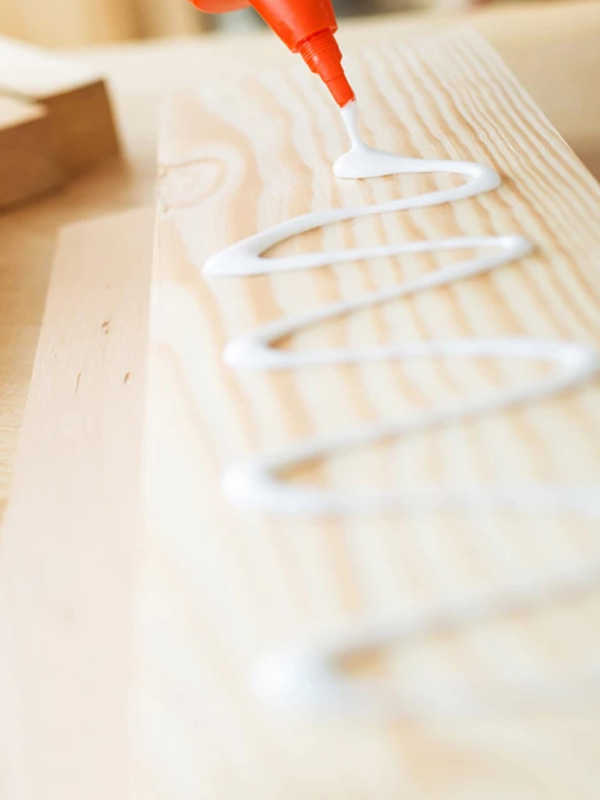
Applications of bonding adhesives in footwear industry
Bonding adhesives are widely used in the footwear industry because they provide strong, durable, and flexible bonds between various materials. Here are some of the typical applications of bonding adhesives in the footwear industry:
- Sole attachment: Bonding adhesives are used to attach the shoes’ soles to the shoe’s upper part. The sealants provide a solid and flexible bond that allows for the creation of comfortable and durable footwear.
- Leather bonding: Bonding adhesives bond leather materials together in footwear construction. The adhesives provide a solid and durable bond that allows for the creation of high-quality leather footwear.
- Decorative embellishments: Bonding adhesives attach decorative embellishments such as sequins, studs, and rhinestones to footwear. The adhesives provide a strong bond that allows for the creation of unique and attractive designs.
- Repair and restoration: Bonding adhesives are used to repair and restore footwear. The adhesives can be used to reattach loose or broken parts of the shoe and repair tears or other damage.
- Insole attachment: Bonding adhesives attach insoles to the inside of shoes. The adhesives provide a robust and comfortable bond that allows for the creation of supportive and comfortable footwear.
Safety considerations when using bonding adhesives
Bonding adhesives can be very effective in creating strong bonds between materials, but using them safely and correctly is essential. Here are some safety considerations to keep in mind when using bonding adhesives:
- Proper ventilation: Many bonding adhesives release fumes that can be harmful if inhaled. It is essential to use adhesives in a well-ventilated area, such as a room with an open window or a ventilation system.
- Protective equipment: Gloves, eye protection, and a respirator may be necessary when working with bonding adhesives, depending on the type of adhesive and the application method.
- Storage: Bonding adhesives should be stored in a cool, dry place away from heat sources and direct sunlight. They should be kept out of reach of children and pets.
- Skin contact: Some bonding adhesives can irritate the skin, so it is essential to avoid prolonged skin contact. If skin contact occurs, wash the affected area with soap and water and seek medical attention if necessary.
- Follow manufacturer’s instructions: It is essential to read and follow the manufacturer’s instructions for the adhesive, including recommended application methods, curing times, and safety precautions.
- Disposal: Bonding adhesives should be disposed of properly, following local regulations. Some bonds may require special handling, such as being taken to a hazardous waste facility.
Potential hazards of bonding adhesives
Bonding adhesives can be a convenient and effective way to join two surfaces, but like any other product, they also come with potential hazards. Here are some of the most common risks associated with bonding adhesives:
- Skin and eye irritation: Many bonding adhesives contain chemicals that can irritate the skin and eyes upon contact. Following proper safety precautions when working with these adhesives is essential, such as wearing gloves and safety goggles.
- Flammability: Some bonding adhesives are flammable, creating a fire hazard if they come into contact with a spark or other ignition source. These adhesives should be stored away from heat sources and open flames.
- Toxicity: Some bonding adhesives contain toxic chemicals that can be harmful if inhaled or ingested. Working in a well-ventilated area and following the manufacturer’s safety guidelines when using these products is essential.
- Chemical reactions: Some bonding adhesives can react with other chemicals or materials, such as paint or certain plastics, which can cause damage or compromise the bond. It is essential to check compatibility with other materials before using these adhesives.
- Structural integrity: Depending on the application, bonding adhesives may not provide the strength and durability required for specific tasks. Choosing the suitable adhesive for the job is essential, as following the manufacturer’s instructions carefully.
Personal protective equipment (PPE) when working with bonding adhesives
When working with bonding adhesives, wearing appropriate personal protective equipment (PPE) to minimize the risk of exposure to potentially hazardous chemicals or physical hazards is essential. Here are some examples of PPE that may be recommended when working with bonding adhesives:
- Gloves: Chemical-resistant gloves can protect the skin from irritation or burns caused by exposure to bonding adhesive chemicals. Latex or nitrile gloves are typically recommended, depending on the adhesive used.
- Eye protection: Safety goggles or a face shield can protect the eyes from exposure to adhesive vapors or splashes.
- Respirators: Depending on the specific adhesive and application, a respirator may be required to protect against inhalation of harmful vapors or particles.
- Protective clothing: A lab coat or apron can protect clothing from spills or splashes of adhesive.
- Footwear: Closed-toe shoes or boots with non-slip soles can protect the feet from spills or slips on potentially slippery surfaces.
Proper storage and disposal of bonding adhesives
Here are some guidelines for proper storage and disposal of bonding adhesives:
Storage:
- Store bonding adhesives in their original containers with the lid tightly closed to prevent air exposure.
- Keep bonding adhesives in a cool and dry place, away from direct sunlight, heat, and moisture.
- Avoid storing bonding adhesives near ignition sources, such as open flames, sparks, or electrical equipment.
- Store bonding adhesives away from food, drink, and other products that may become contaminated if the adhesive leaks or spills.
Disposal:
- Follow the manufacturer’s instructions for proper disposal of bonding adhesives.
- Do not dispose of bonding adhesives in the trash, down the drain, or sewer system.
- Contact your local hazardous waste disposal facility for guidance on safely disposing of bonding adhesives.
- If you have a small amount of bonding adhesive, you can solidify it with a solidifier before disposing it in the trash. However, this should only be done after checking with your local waste management facility to ensure it is allowed.
By following these guidelines, you can ensure that bonding adhesives are stored and disposed of properly, minimizing the risk of harm to people and the environment.
How to select the right bonding adhesive for your application
Selecting the suitable bonding adhesive for your application ensures a solid and durable bond. Here are some factors to consider when choosing the suitable bonding adhesive:
- Substrates: Consider the materials you want to bond. Some adhesives work well with specific materials like metals, plastics, rubber, or wood. Check the manufacturer’s recommendations to ensure the glue matches the substrates you plan to bond.
- Bonding strength: Determine the type of bonding strength you require, such as structural, permanent, or temporary. The bonding strength depends on the adhesive’s chemistry and application process.
- Environment: Consider the environmental conditions the bond will face, such as temperature, humidity, and exposure to chemicals or UV radiation. Some adhesives perform better than others under certain ecological conditions.
- Application process: Determine the application process you will use, such as spray, brush, or roller. Some adhesives are better suited for specific application methods.
- Cure time: Consider the required cure time for the adhesive to reach its full strength. Some bonds require a longer curing time than others.
- Safety: Check the adhesive’s safety requirements, such as ventilation or the need for personal protective equipment (PPE).
- Cost: Consider the adhesive’s expense, including the bond price, the cost of application equipment, and any other associated costs.
Considering these factors, you can select the suitable bonding adhesive for your application, ensuring a solid, durable bond that meets your requirements. Following the manufacturer’s instructions for application and curing times is essential to ensure optimal performance.
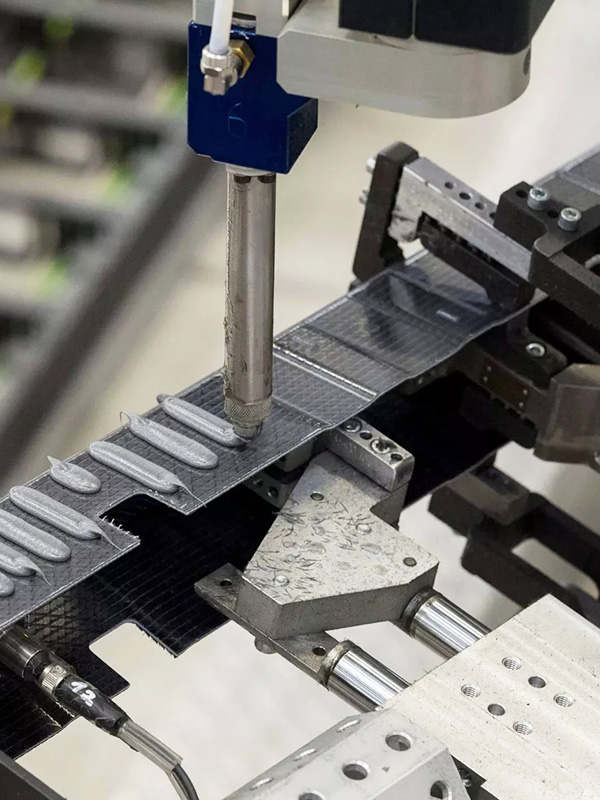
Factors to consider when selecting a bonding adhesive
When selecting a bonding adhesive, there are several factors that you should consider to ensure that the bond will meet your specific requirements. Here are some of the critical factors to consider:
- Substrates: Consider the materials you will be bonding, as some adhesives work better with specific substrates, such as metals, plastics, or composites.
- Collaborative design: Consider the creation of the joint you will be bonding, including the size, shape, and surface area. The adhesive must be able to flow into the joint and provide sufficient bonding strength.
- Bonding strength: Determine the type of bonding strength you need, such as a structural bond or a temporary bond. Some adhesives provide higher strength and durability than others.
- Environmental conditions: Consider the environmental conditions the bonded assembly will be exposed to, including temperature, humidity, exposure to chemicals or UV radiation, and whether the joint will be exposed to moisture.
- Application method: Consider the application method you will use, such as spray, brush, or roller. Some adhesives are better suited to specific application methods.
- Cure time: Consider the required cure time for the adhesive to reach its full strength. Some bonds require a longer curing time than others.
- Safety: Consider the safety requirements for the adhesive, including ventilation, the need for personal protective equipment (PPE), and whether the adhesive is flammable or hazardous.
- Cost: Consider the cost of the adhesive, including the price of the adhesive itself, any application equipment required, and any other associated costs.
Considering these factors, you can select the suitable bonding adhesive for your application, ensuring a solid, durable bond that meets your requirements. Following the manufacturer’s instructions for application and curing times is essential to ensure optimal performance.
Preparation of surfaces before bonding adhesive application
Preparing surfaces properly before bonding adhesive application is crucial for achieving a solid and durable bond. Here are some general steps to follow when preparing surfaces for bonding adhesive application:
- Clean the surfaces: The surfaces to be bonded should be free of any dirt, dust, grease, oil, or other contaminants that could interfere with the adhesive bond. Use an appropriate cleaner or solvent to remove any surface contaminants.
- Roughen the surfaces: In most cases, roughening the surfaces with sandpaper or a wire brush can improve the bond strength. This process increases the surface area, allowing the adhesive to bond more effectively.
- Apply a primer: Depending on the adhesive and substrates involved, applying a primer may be necessary to improve the bonding performance. The primer will promote adhesion and increase the bond strength.
- Allow surfaces to dry: Before applying the adhesive, allow the characters to dry completely. Moisture or solvent residue can interfere with the adhesive bond, resulting in a weak bond.
- Apply the adhesive: Apply the adhesive to one of the surfaces, following the manufacturer’s instructions for application and coverage. Use the appropriate amount of adhesive to achieve a strong bond.
- Assemble the joint: After applying the adhesive, carefully position the surfaces to be bonded and clamp them in place, if necessary, to ensure a strong and secure bond. Follow the manufacturer’s instructions for curing time.
Tips for achieving a successful bond with bonding adhesives
Achieving a successful bond with bonding adhesives depends on several factors, including proper surface preparation, adhesive selection, and application technique. Here are some tips for achieving a successful bond:
- Choose the suitable adhesive: Select an appropriate adhesive for the bonded substrates, environmental conditions, and desired bonding strength.
- Proper surface preparation: Ensure the surfaces are clean, dry, and free of contaminants that could interfere with the adhesive bond. Roughening the surface with sandpaper or a wire brush can also improve the bond strength.
- Follow the manufacturer’s instructions: Follow the manufacturer’s instructions for adhesive application, curing time, and assembly.
- Use the correct amount of adhesive: Apply the right amount to achieve the desired bond strength. Too much or too little adhesive can result in a weak bond.
- Apply the adhesive evenly: Apply the adhesive evenly to avoid weak spots or air pockets that could affect the bond strength.
- Allow sufficient curing time: Allow the adhesive to cure for the recommended time before applying stress to the bond. Using pressure too soon can weaken the bond.
- Monitor the environmental conditions: Ensure that the environmental conditions are within the adhesive manufacturer’s recommended range for optimal bonding performance.
- Test the bond: After the adhesive has cured, test the bond to ensure it meets the desired strength requirements.
By following these tips, you can achieve a successful bond with bonding adhesives, ensuring a solid and durable bond that meets your specific requirements.
Future trends in industrial bonding adhesives
Industrial bonding adhesives have come a long way in recent years, and several trends are likely to shape the industry in the future. Here are some of the key trends to watch:
- Increased use of intelligent adhesives: Smart adhesives are designed to be responsive to changes in temperature, humidity, or other environmental factors, allowing them to adapt to changing conditions and provide stronger bonds. These adhesives are already being used in some industrial applications, and their use is expected to increase.
- Development of biobased adhesives: As sustainability becomes a more significant concern, the development of biobased adhesives is likely to increase. These adhesives are made from renewable resources, reducing their environmental impact and making them more sustainable.
- Expansion of UV-curable adhesives: UV-curable adhesives are fast-curing, which can increase production efficiency and reduce energy costs. As technology advances, these adhesives will become more versatile, making them suitable for a broader range of industrial applications.
- Development of new hybrid adhesives: Hybrid adhesives combine the best features of different adhesive technologies, such as the strength of epoxies and the flexibility of polyurethanes. As new formulations are developed, these adhesives will become more versatile and widely used.
- Greater use of automation: As manufacturing processes become increasingly automated, the use of mechanical adhesive application systems is likely to increase. These systems can improve efficiency and reduce the risk of errors, improving overall product quality.
Overall, the future of industrial bonding adhesives will likely involve the development of new technologies that provide more robust, more versatile bonds while also addressing concerns around sustainability and efficiency.



